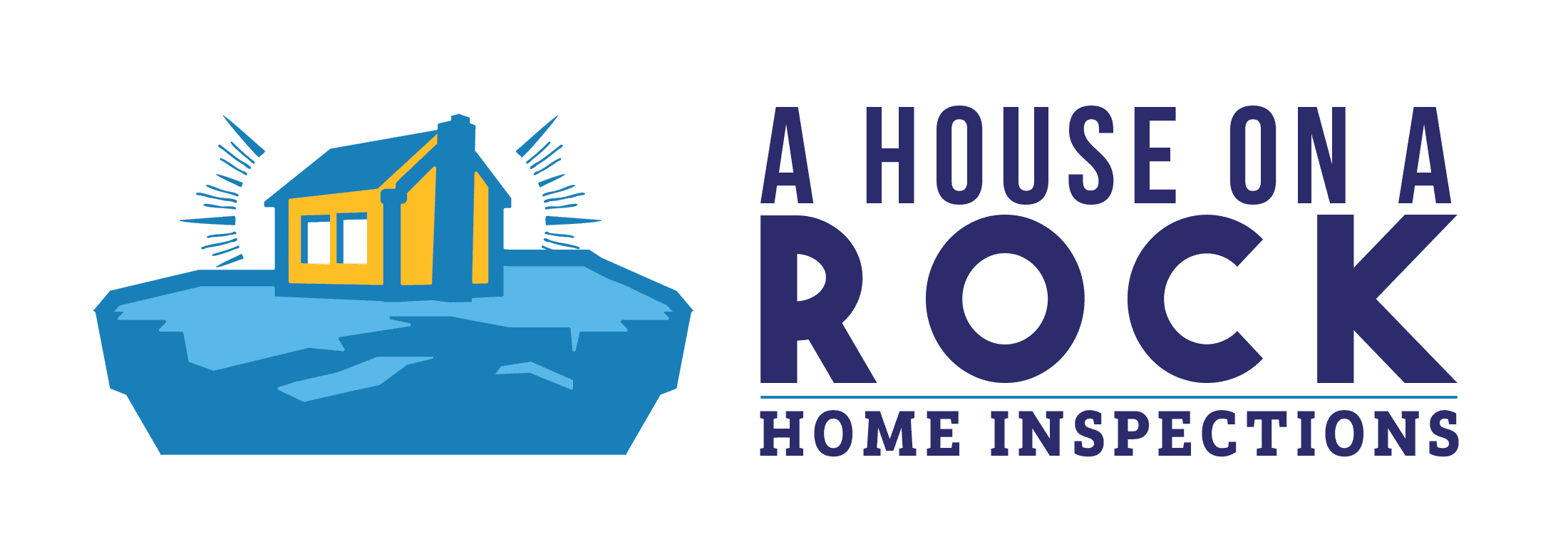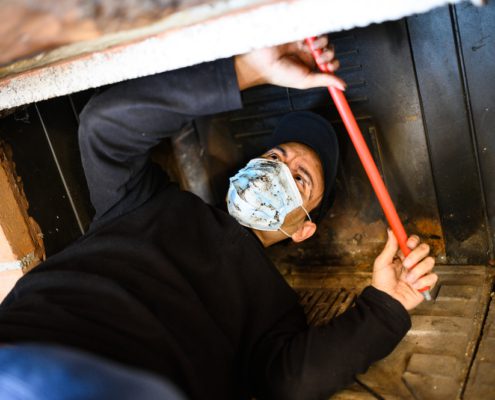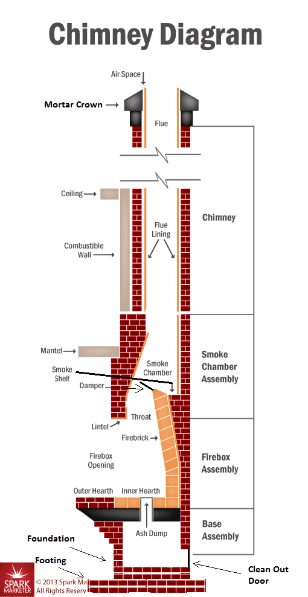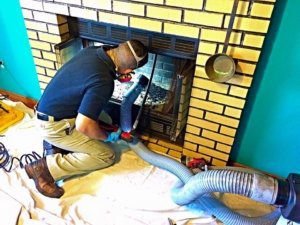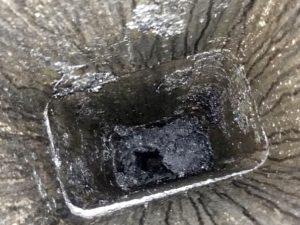How to Sweep (Clean) Your Chimney
Woodstoves, fireplaces and chimneys, and heating equipment connected to chimneys cause 50,000 house fires a year. According to the NFPA (National Fire Protection Association), the leading factor is “failure to clean.” So, to protect yourself, your family, and your home, you’ll need to know how to sweep (clean) your chimney.
In other words, most of these fires are preventable. Fortunately, although a candidate for Mike Rowe’s “Dirty Jobs,” chimney cleaning is not difficult with knowledge and the right tools and materials.
Chimney Sweeping Tools and Materials
To be clear, chimney sweeps never state that your fireplace or chimney is clean, only swept.
Difficulty: Intermediate
Chimney Sweep Tools Needed
- Drill (Take our cordless tools quiz to find the right brand for you)
- Rotary Chimney Sweep Kit
- Sturdy Ladder
- Ash Vacuum (A regular shop vacuum will work if the soot is completely cool)
Materials Needed
- N95 Respirator ( Do not substitute with a standard dust mask)
- Gloves
- Drop Cloth
- Plastic tarp or plastic sheeting
- Duct Tape
Safety Considerations
Soot is a known carcinogen – a cancer-causing substance. Sweeping a dirty chimney will expose you to airborne soot. Wear an N95 mask, gloves, and long-sleeve clothing to protect yourself from soot exposure.
Understand Your Fireplace Chimney
Before sweeping your chimney, you should understand its primary components and how it works. A wood-burning fireplace has basic components. There is the firebox, the damper, the smoke shelf, the smoke chamber, the chimney flue, the crown, and the chimney cap. In addition, some fireplaces have an ash dump and clean-out.
The Firebox
The firebox is where you put your wood and start your fire—special firebricks and refractory mortar line the firebox to give it high resistance to heat. The firebox also consists of the hearth, a lintel, the throat, and the ash dump, if there is one. Contrary to popular belief, the hearth is not the non-combustible flooring in front of the firebox. Instead, the hearth is the floor of the firebox, and the hearth extension is in front of the firebox. Next, the lintel is the metal beam placed over the firebox opening to support the brick above it.
Moving upward, the throat is the narrower part above the firebox beneath the damper. Smoke is channeled up the throat before moving through the damper.
The Fireplace Damper
The damper is a metal door separating the firebox from the flue. Its role is to allow smoke to escape when the fireplace is in use and prevent cold air from coming in when it’s not in use. Likewise, it should be completely open when burning wood. A common misconception is that you can regulate heat by adjusting the damper. However, this is not true. If you do not fully open the damper, you risk smoke back-drafting into your home.
The Chimney Smoke Chamber and Shelf
The smoke chamber is the area above the damper but before the flue. Its walls are angled, creating a smooth transition to the much smaller flue opening. Without a smoke chamber, smoke would be more likely to backdraft into the home.
The Chimney Flue
The flue is the passageway the smoke takes to get it outside. Generally, the flue consists of the chimney bricks and the chimney liner. The chimney liner is made of non-combustible materials such as clay tile, stainless steel, or aluminum. However, some chimneys have unlined flues, which are dangerous and should not be used.
The Top of the Chimney
You have your crown and rain cap on top of the chimney. The cap stops small animals and water (rain) from going down the chimney. The crown is a masonry umbrella that protects the brick and liner from water intrusion.
Chimney Inspections
Sweeping your chimney should only be done in combination with an annual chimney inspection by a certified chimney sweep. Soot buildup is only one fire hazard of many that can exist within a chimney. A professional chimney sweep will be able to identify other hazards.
Steps for Sweeping your Chimney
- Order your tools. Use a ladder to get on your roof or the top of your chimney and measure the flue tile opening. Next, measure or estimate the height of your chimney. Finally, order a rotary chimney brush and rods based on your measurements. Note: we do not recommend using a wire chimney brush.
- Inspect it first. Use a flashlight to inspect the inside of your chimney. Look for blockages and animal nests. A nest could indicate you have chimney swifts which are a protected species. You can get fined for destroying nests with eggs or baby swifts.
- Set up your space. Lay a drop cloth or two in front of your fireplace. Tape your plastic tarp to cover the fireplace opening. Do not tape it all the way around, as you will need access.
- Position your ash vacuum or shop vac hose in your sealed-off firebox. This will help prevent soot from going all over your house.
- Put on your respirator and gloves.
-
Begin sweeping.
You can sweep from the top of the chimney or from inside at the bottom of the chimney. We recommend sweeping from the bottom as there is much less risk for injury. First, put the chimney brush on a rod. I start with two rods connected as one is usually not long enough to get into the smoke chamber. Connect your rods to your drill, and slowly press the trigger while moving your rods upward. As you reach the end of a rod, connect another one and continue sweeping. You can sweep as fast as your vacuum can keep up with the soot.
- Final Check. Once you’ve swept the chimney, inspect it to ensure you cleaned all areas. You can also check the flue liner for any cracks or damages. However, we recommend an annual inspection from a qualified chimney sweep.
- Don’t forget the smoke shelf. A lot of soot will find behind the damper on the smoke shelf. Use your vacuum and an attachment to clean this area.
- Finish up. Vacuum up any remaining soot, remove your tarp and drop cloths, and enjoy your fireplace. If you swept your chimney from above, make sure you replace the cap.
When to Call a Pro
Homeowners can’t tackle all chimney sweeping jobs such as creosote build-up. Creosote buildup is a hard, shiny, and sometimes sticky substance on the inside of the chimney. On the other hand, soot is a soft powdery buildup. Heavy creosote buildup inside of a chimney is a fire hazard. Typically, it can’t be removed with standard chimney sweeping equipment. In fact, some sweeps will condemn a chimney that has heavy creosote buildup.
Additionally, you will need to call a pro if you have any signs of smoke staining outside the firebox. This is a sign that your chimney is back-drafting which is a significant safety hazard.
